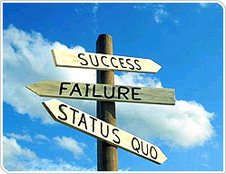
Useful Tips:
1. Be neat and error free
Catching all types and grammar errors. Make sure to have someone proofread your resume, preferably someone attentive to details. Even the smallest error could land your resume in the electronic recycle bin.
2. State specific objectives
Form a solid, clear objective that will help you carry a focused message throughout the resume. The objective summarizes your skills and emphasizes your strengths.
3. Why does the employer need you
Focus on highlighting accomplishments that will arouse the interest of employers who read resumes asking themselves: "What can this candidate do for me?" Remember that the goal is to get the interview.
4. Make a good first impression
On average; employers spend less than 30 seconds scanning each resume. Most employers are more concerned about career achievements than education. Place the most interesting and compelling facts about yourself at the beginning, such as a list of accomplishments in order of relevance.
5. Emphasize your skills Use a skill-based resume format organized around the main talents you have to offer. Prioritize everything.
6. Use keywords
Include specific key words and phrases that describe your skills and experience, such as Product Launch, Income Statement, Balance Sheet, Sales, Account Management, C++, Visual Basic, Word Processing, MS Excel, Graphic Design and Advertising.
7. Use buzzwords
Use industry jargon and acronyms to reflect your familiarity with the employer's business, but not to the point where it makes your resume hard to read or understand. Spell out acronyms in parentheses if they are not obvious, such as TQM (Total Quality Management).
8. Use action verbs
Portray you as active, accomplished, intelligent and capable of making a contribution. Examples: Managed, Launched, Created, Directed, Established, Organized and Supervised.
9. Avoid Personal Pronouns
Never use personal pronouns such as `I` or `me` in your resume. Instead of complete sentences, use short action-oriented phrases: "Coordinated and published a weekly newsletter concerning local community events."
10. Highlight key points
Although most formatting such as bold, italics and underlining is lost in an electronic resume, you may use capital letters, quotation marks, even asterisks, to emphasize important words or section titles.
11. Summarize information
While electronic resumes may exceed the traditional one to two page limit of paper resumes, in most cases, it should not exceed three pages.
12. List only recent information
The general rule of thumb is to show your work experience only for the last 10 to 15 years.
13. Quantify your experience
Numbers are a powerful tool. Instead of saying "Responsible for increasing sales in my territory," use "Increased sales in my territory 150 percent in six months. Managed 30 accounts for annual revenues of two million dollars."
14. Be organized, logical and concise
In addition to reviewing your experience, employers also use the resume to get a sense of whether you are organized, logical and concise.
15. Just communicate
Abandon the utilization of exorbitant, exquisite vocabulary. In other words, don't try to impress employers with the depth of your vocabulary. Use words everyone can understand.
16. Omit salary information
Never make reference to salary in your resume.
17. Avoid questionable subjects
Never make references to personal information such as race, religion, marital status, age, political party, or even personal views. In all but a few instances, it would be illegal for the employer to consider such issues. Also, avoid the use of humor and cliches in most resumes.
18. Be honest
Lying or exaggerating your abilities will always come back to haunt you. Since employers usually check into serious candidates, you will want every detail to check out.
19. Sell yourself
Do not under-emphasize your strengths and experience. Portray yourself in the best possible light. Skills that come naturally to you, others may never grasp.
20. Write your own resume
Be personal, yet professional. Create a resume that is personalized to reflect you.
21. Personal traits
if you decide to include personal traits, such as "Dependable, Highly-Organized, Self-Motivated, and Responsible," make sure they are applicable to the position desired. Will the employer consider them valuable?
22. Show consistency
to de-emphasize glaring gaps in your work history, consider using a functional resume, which focuses on your skills and accomplishments rather than a chronological format, which emphasizes the progression of your experience.
23. Be balanced and neat
The effective resume is balanced, neat, visually appealing and flows consistently. Clearly separate sections and emphasize section titles. Leave sufficient blank space between sections for easy reading.
24. Stick with common section headings
Use common section headings. Examples: Objective, Experience, Employment, Work History, Skills, Summary, Summary of Qualifications, Accomplishments, Strengths, Education, Professional Affiliations, Publications, Licenses and Certifications, Honors, Personal, Additional and References.
25. Be positive
Remove any negative comments or feelings conveyed in your resume, especially when it comes to previous employment experiences. Emphasize a positive, can-do attitude.






1 comment:
Cv Tips
Post a Comment